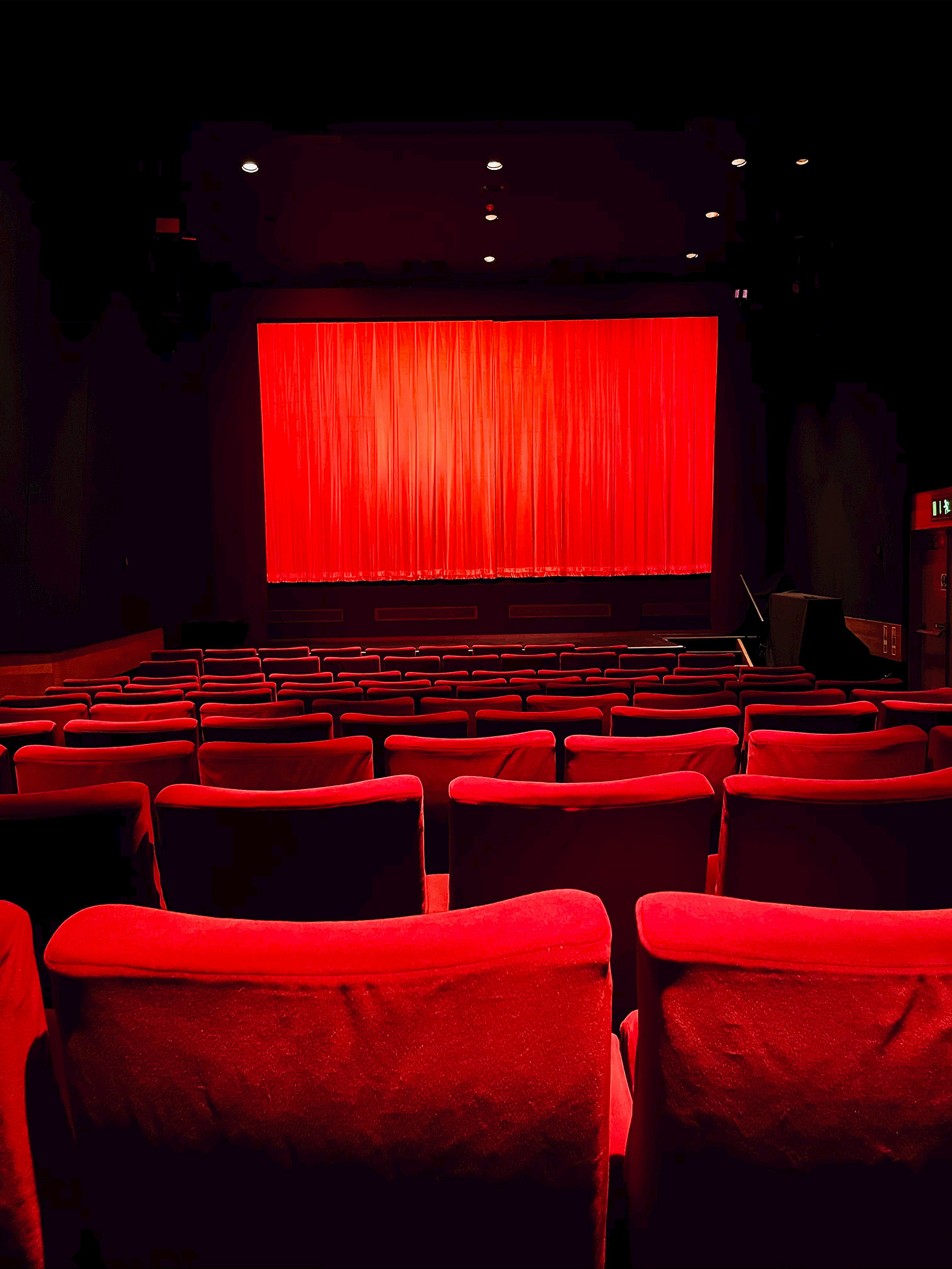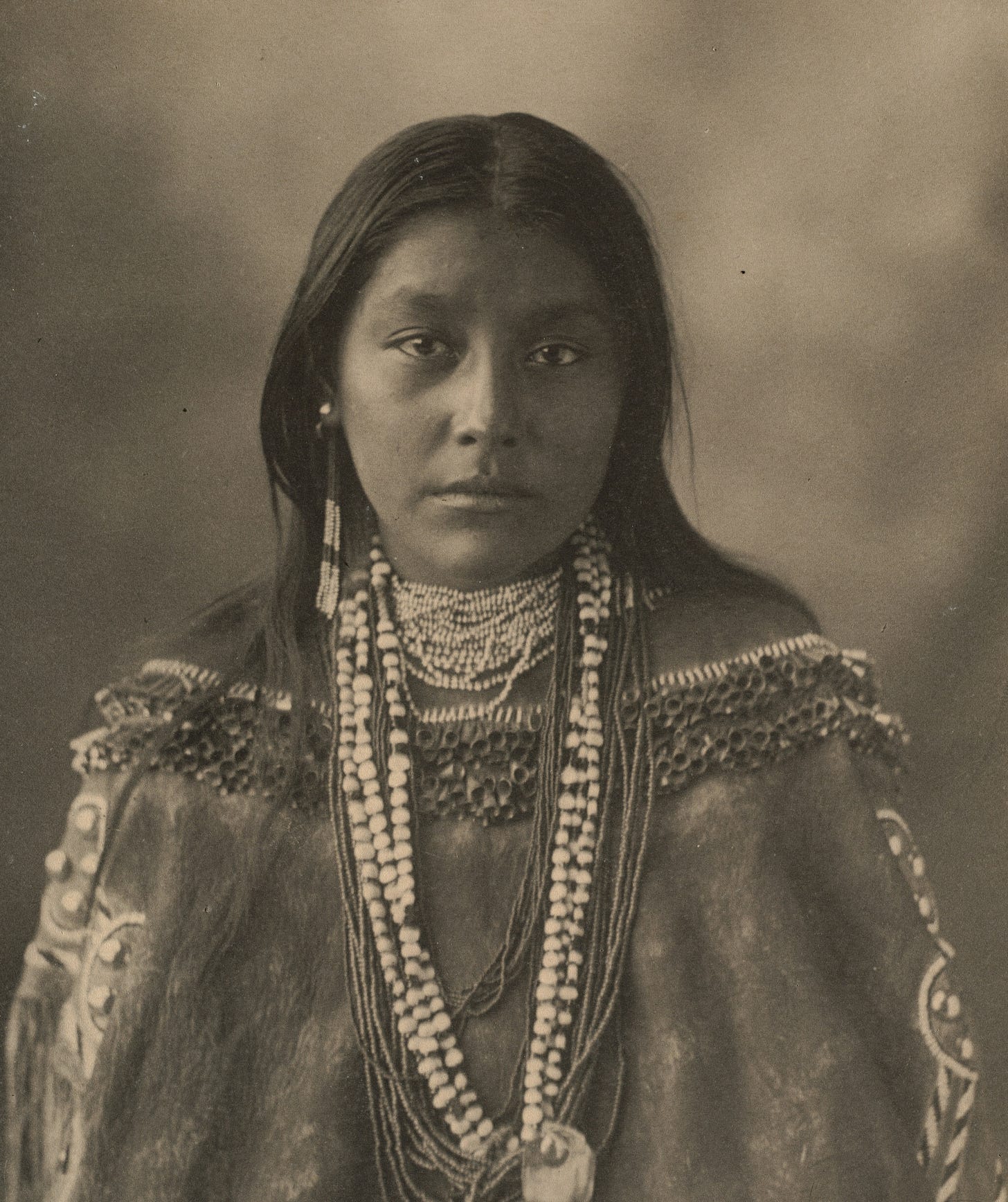Killers of the Flower Moon - parallels with our own tragic story
There's no point waiting: no cavalry is coming to save us

I went to see this (very long) film a few months ago. It has taken me a while to write about it, but now I see it is nominated for an Oscar, so it’s important to get this down. [2 min trailer here]:
The film is based on a true story, from a book by David Grann (no, I haven’t read it yet) of the same name: (briefly summarised below):
In the 1920s, the richest people per capita in the world were members of the Osage Nation in Oklahoma. After oil was discovered beneath their land, the Osage rode in chauffeured automobiles, built mansions, and sent their children to study in Europe.
Then, one by one, the Osage began to be killed off. The family of an Osage woman, Mollie Burkhart, became a prime target. One of her relatives was shot. Another was poisoned. And this was just the beginning, as more and more Osage were dying under mysterious circumstances, and many of those who dared to investigate the killings were themselves murdered.
…one of the most chilling conspiracies in American history.
First, let’s not forget the importance of real life experiences - and yup, supporting our local cinema is like stepping back in time. Our community-run theatre is set in an historic (for New Zealand, anyway) building, chocker-block with various cinematography ephemera dating back nearly 100 years - original advertising posters, tickets and programmes cover the dark-red wallpapered-walls. The air has that familiar mix of dusty carpets, sweet hot popcorn and brass-polish. There’s always a smiling face from the friendly staff, too (no masks in sight, thank God). And always an ice-cream treat to had at the interval.

Cinema and Escapism
I wrote last week about Victor Klemperer’s Diaries of the run-up to the totalitarian Nazi era:
Lost in a Generation: the truth about WW2 and propaganda theory
I’m just finishing another book recommended by Mark Crispin Miller in one of his lectures about propaganda theory: “I shall bear Witness”: The Diaries of Victor Klemperer 1933-1941.’ As the translator explains: “The Diaries […] chronicle in unparalleled detail the progressive elimination of every private space, the arbitrary cruelty towards those whom the regime defined as…
And it’s unsurprising that Klemperer complained most bitterly to his diary, in his hometown in Dresden in 1938, not when his possessions were confiscated or the curfew was applied, but instead when he was denied access to his library and also forbidden from entering the cinema. Going to the cinema is symbolic of that civilized escapism that we all need, to cope with this constantly-evolving dystopian world. It wasn’t simply about the stories, it was engagement with the characters, the images and script, the complexities and contradictions, and sharing those experiences with the audience.
For Klemperer, along with not being allowed to drive anywhere, or keep his cat, it was the final straw. The abolition of his Human Rights had got so explicit, he had to leave his beloved Germany. Gone was that last thread of hope he and his wife had that meant they had ‘waited long enough’. Was someone, anyone, coming to save them from what increasingly looked like an inevitable, horrific end?
This film’s theme
Killers of the Flower Moon has master film-maker Martin Scorcese in charge, and cast members such as Robert De Niro and Leonardo DiCaprio, so no-one could claim surprise at seeing this movie lined-up for an Oscar.
But even if you haven’t (yet) seen this film, the trailer alone betrays how this isn’t any ordinary (is there such a thing?) Scorcese film, but rather an “Unsettling Masterpiece” as the New York Times describes it. Despite the fedoras, guns and horses, this film isn’t a Murder-Mystery-Western. It is a story with meaning. It is a traumatic story for this time, with an important message.
As The Spokesman review pointed out:
“The film is an exercise in hoping someone will do something about it, waiting for the cavalry to ride in.”
The themes of the story are pride, greed, racism, exploitation, prejudice and fundamentally betrayal in the love story between the (simple-minded) character Ernest (‘Westerner’ DiCaprio) and spiritual Mollie (Lily Gladstone, Osage). A clash of cultures and languages and aspirations.
Poisonous injections
Many of us are re-visiting long-held beliefs about interpretations of health and wellbeing - including nutrition. And this story presents one of those beliefs, about the historic understanding and diagnoses of diabetes in Native Americans, who aspired to non-native ‘Western’ diets. In a shocking reflection of what is happening today, Scorcese shows the Western doctors prescribing the ‘new expensive medicine’ insulin for (guinea-pig) Mollie, (conveniently ignoring the potential underlying causes). The ideology of obeying the ‘educated experts’ in white coats already embedded in those early settlers’ lives.
The symbolic insulin syringe then becomes a convenient method of slowly poisoning Mollie, to obtain access to her families’ wealth:

One of the troubling and effective contradictions in the story is how Ernest and Mollie appear to genuinely be in love, even if it was a marriage of convenience for the profitable oil and land ownership. His act of injecting his wife (rather than allowing a doctor to do it) is portrayed as an act of love and sacrifice: the ‘medicine’ is safe and effective and expensive; you should be grateful for the opportunity of health’. Yet Ernest’s Uncle William (De Niro) manages to persuade his nephew to (slowly) kill his wife for the oil money that’s “theirs anyway’. Surrounded by death, their sense of entitlement makes Ernest believe the slow murder is justified, but over time he is simultaneously wracked with guilt, confusion and shame about the secret pact with his uncle and suspicious that his wife knows about his hidden agenda (she does). He’s so ashamed, he takes a (sub-lethal) dose of the poison himself, allowing Scorcese a scene of comatose victims (reminiscent of current day Fentanyl addicts).
The desperate hopefulness throughout the movie is palpable - as an audience, we must believe that Ernest (with a good heart) must ‘wake the f*ck up!’ and see he is being coerced by his evil Uncle; saving his wife from certain death. We also hope that Mollie can find the physical and emotional strength to stop her husband from injecting her with poison, so that she can divorce him and retain her tribal lands. So we wait, in suspense, for someone to do something! But overall there’s the hope that there can be justice in this new land of opportunity and it can offer fairness and equity and respectful multiculturalism - was it really (already) too late for that, one hundred years ago? Has selfish materialism won, and the judiciary captured?
To return to the Spokesman’s review:
“Killers of the Flower Moon” is Scorsese’s Western, but it is also a gangster movie, about men of violence, newly arrived in a lawless land conspiring to murder, steal and amass money and power by any means necessary, weaponizing their whiteness, praying at the altar of capitalism. But there is no God in greed. There is no spirituality in money. There is no salvation in oil.
But despite these sinister themes, including violence and death, this film doesn’t end on an entirely negative note. I won’t write any spoilers here, but the characters do evolve toward an interesting outcome.
There is hope in the darkness as we can see today in the resilience of humanity and the power of spirituality. But if there’s one moral of this film’s story, it’s that there’s no point hoping and waiting for someone else to ‘save us’ from that slow poisoning.
We must take action now to save ourselves.







“There's no point waiting: no cavalry is coming to save us… We must take action now to save ourselves.”
Your observations crystallised some conclusions I was trying to reach! Thanks. Can you reflect on the ending? I'm recalling it finished reducing the investigations into the murders into a scene in a radio play, as a metaphor for being stage managed, perhaps. I found this article helpful re the ending https://www.vox.com/culture/23924295/killers-flower-moon-ending-explain-scorsese.